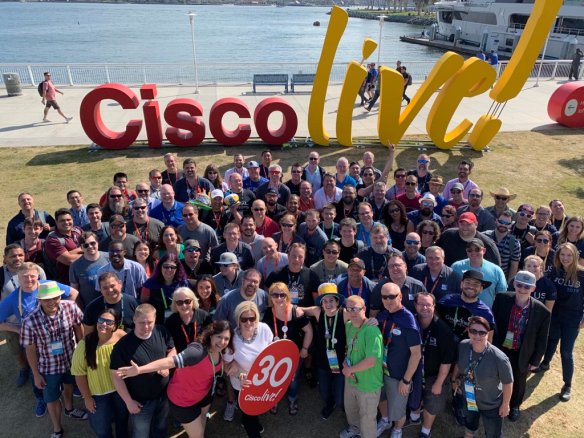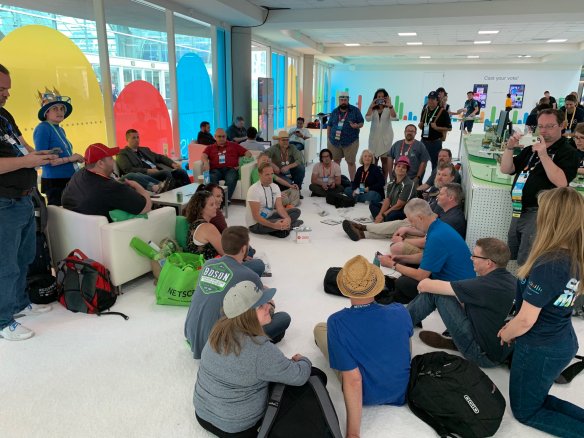Gitlab Gitaly Error
Gitlab gitaly issue causing 404 and 503 errors.Major Updates to Cisco Certifications Part IIII (CCIE)
The CCIE, now 25 years old, has always been the pinnacle of Cisco certifications. There has been a lot of buzz on the importance of certs, and the CCIE, in the “new” era. For that reason, it’s more important than ever that the CCIE gets updated and stays current.
With Cisco’s new announcements, what is changing with the CCIE?
The first thing to mention, for those that already have a CCIE, is that the recert cycle is now being changed to match the other certs such as CCNA and CCNP, so that the recert cycle is 3 years. This means that the suspended status is gone. The cert is now valid for 3 years and there is no suspended status. This means that you need to keep track of your date because there is no “grace period”, after 3 years, if you miss to recert, you’re out! This also means that effective 24 February 2020, if you are still active or suspended, you get an extra year “for free” and you will be a active CCIE to your new expiration date.
Because the recert cycle is now 3 years, you will need to get 120 CE credits instead of 100, Continue reading
Musing: HPE Cloudless Is A Good Marketing Joke

HPE announced a marketing campaign built around the idea of Cloudless. I see this as a superb bit of trolling as the cloudista faithful have been delightfully duped into talking about HPE and highlighting how narrow minded they are. Most of them don’t even realise just how hard they are being rick-rolled here. Its bloody […]
The post Musing: HPE Cloudless Is A Good Marketing Joke appeared first on EtherealMind.
BT Positions Itself as a Neutral SD-WAN Advisor
BT, a United Kingdom-based telecom operator, says almost all of its current and prospective...
SDxCentral Weekly Wrap: VMware Dives Deeper Into Multi-Cloud Security With Secure State
SDxCentral Weekly Wrap for June 21, 2019: VMware is brining together past security acquisitions;...
Latest Kubernetes Security Flaw Linked to Incomplete Patch of Past Flaw
Joel Smith, who works with the Kubernetes Product Security Committee, described the latest bug as...
AT&T, HPE Tackle MEC, 5G, and All the Acronyms
The joint product, which combines AT&T multi-access edge compute services and HPE’s...
Hutchison Drei Austria Taunts Rivals With ‘Real 5G’
The mobile operator is starting its 5G journey in Linz, with official rate plans and commercial...
Cisco Live 2019 – Rededicating Community

The 2019 Cisco Live Sign Photo
Another Cisco Live is in the books for me. I was a bit shocked to realize this was my 14th event in a row. I’ve been going to Cisco Live half of the time it’s been around! This year was back in San Diego, which has good and bad points. I’d like to discuss a few of them there and get the thoughts of the community.
Good: The Social Media Hub Has Been Freed! – After last year’s issues with the Social Media Hub being locked behind the World of Solutions, someone at Cisco woke up and realized that social people don’t keep the same hours as the show floor people. So, the Hub was located in a breezeway between the Sails Pavilion and the rest of the convention center. And it was great. People congregated. Couches were used. Discussions were had. And the community was able to come together again. Not during the hours when it was convenient. But a long time. This picture of the big meeting on Thursday just solidifies in my mind why the Social Media Hub has to be in a common area:

You don’t get this kind of Continue reading
Introducing time.cloudflare.com

This is a guest post by Aanchal Malhotra, a Graduate Research Assistant at Boston University and former Cloudflare intern on the Cryptography team.

Cloudflare has always been a leader in deploying secure versions of insecure Internet protocols and making them available for free for anyone to use. In 2014, we launched one of the world’s first free, secure HTTPS service (Universal SSL) to go along with our existing free HTTP plan. When we launched the 1.1.1.1 DNS resolver, we also supported the new secure versions of DNS (DNS over HTTPS and DNS over TLS). Today, as part of Crypto Week 2019, we are doing the same thing for the Network Time Protocol (NTP), the dominant protocol for obtaining time over the Internet.
This announcement is personal for me. I've spent the last four years identifying and fixing vulnerabilities in time protocols. Today I’m proud to help introduce a service that would have made my life from 2015 through 2019 a whole lot harder: time.cloudflare.com, a free time service that supports both NTP and the emerging Network Time Security (NTS) protocol for securing NTP. Now, anyone can get Continue reading
Introducing time.cloudflare.com

This is a guest post by Aanchal Malhotra, a Graduate Research Assistant at Boston University and former Cloudflare intern on the Cryptography team.

Cloudflare has always been a leader in deploying secure versions of insecure Internet protocols and making them available for free for anyone to use. In 2014, we launched one of the world’s first free, secure HTTPS service (Universal SSL) to go along with our existing free HTTP plan. When we launched the 1.1.1.1 DNS resolver, we also supported the new secure versions of DNS (DNS over HTTPS and DNS over TLS). Today, we are doing the same thing for the Network Time Protocol (NTP), the dominant protocol for obtaining time over the Internet.
This announcement is personal for me. I've spent the last four years identifying and fixing vulnerabilities in time protocols. Today I’m proud to help introduce a service that would have made my life from 2015 through 2019 a whole lot harder: time.cloudflare.com, a free time service that supports both NTP and the emerging Network Time Security (NTS) protocol for securing NTP. Now, anyone can get time securely from all our datacenters in Continue reading
Technology Short Take 115
Welcome to Technology Short Take #115! I’m back from my much-needed vacation in Bali, and getting settled back into work and my daily routine (which, for the last few weeks, was mostly swimming in the pool and sitting on the beach). Here’s a fresh new collection of links and articles from the around the web to propel myself back into blogging. I hope you find something useful here!
Networking
- Mohamad Alhussein shares information on how to add a floating static route to an NSX edge via the NSX REST API.
- Mircea Ulinic shows readers how to use
salt-sproxyto take a different approach to network automation using Salt. Normally this would require the use of Proxy Minions, but Ulinic’s post onsalt-sproxyshows how this can be done without any Proxy Minions. - Michael Kashin has published a couple of posts on a project of his called NaaS (Network-as-a-Service). Part 1 is here, and part 2 is here. These two articles are interesting (to me) because they combine both network automation and Kubernetes. Nifty! I’m looking forward to seeing how NaaS evolves.
- David Holder walks through removing unused load balancer IP allocations in NSX-T when used with PKS. Although I Continue reading
Device Configuration Synthesis with NetComplete on Software Gone Wild
When I was still at university the fourth-generation programming languages were all the hype, prompting us to make jokes along the lines “fifth generation will implement do what I don’t know how”
The research team working in Networked Systems Group at ETH Zurich headed by prof. Laurent Vanbever got pretty close. The description of their tool says:
Read more ...What bugs cause cloud production incidents?
What bugs cause production cloud incidents? Liu et al., HotOS’19
Last time out we looked at SLOs for cloud platforms, today we’re looking at what causes them to be broken! This is a study of every high severity production incident at Microsoft Azure services over a span of six months, where the root cause of that incident was a software bug. In total, there were 112 such incidents over the period March – September 2018 (not all of them affecting external customers). Software bugs are the most common cause of incidents during this period, accounting for around 40% of all incidents (so we can infer there were around 280 incidents total in the pool).
The 112 incidents caused by software bugs are further broken down into categories, with data-format bugs, fault-related bugs, timing bugs, and constant_value bugs being the largest categories. Interestingly, outages caused by configuration errors represented only a small number of incidents in this study. This could be an artefact of that data set in some way, or it might be due to the tool chain that Microsoft uses:
The types of bugs we observed in production are biased by the fact that Microsoft uses effective Continue reading
Co-Founder and CTO JR Rivers Leaves Cumulus Networks
CEO Josh Leslie confirmed Rivers’ departure: “As a company co-founder, he has been a tremendous...